In June 2024, a rare white buffalo calf was born in Lamar Valley of Yellowstone National Park.
A photographer named Erin Braaten captured these amazing photos of the young calf on June 4, 2024. The photo was taken as a group of bison were crossing a road, causing the traffic to come to a stop.
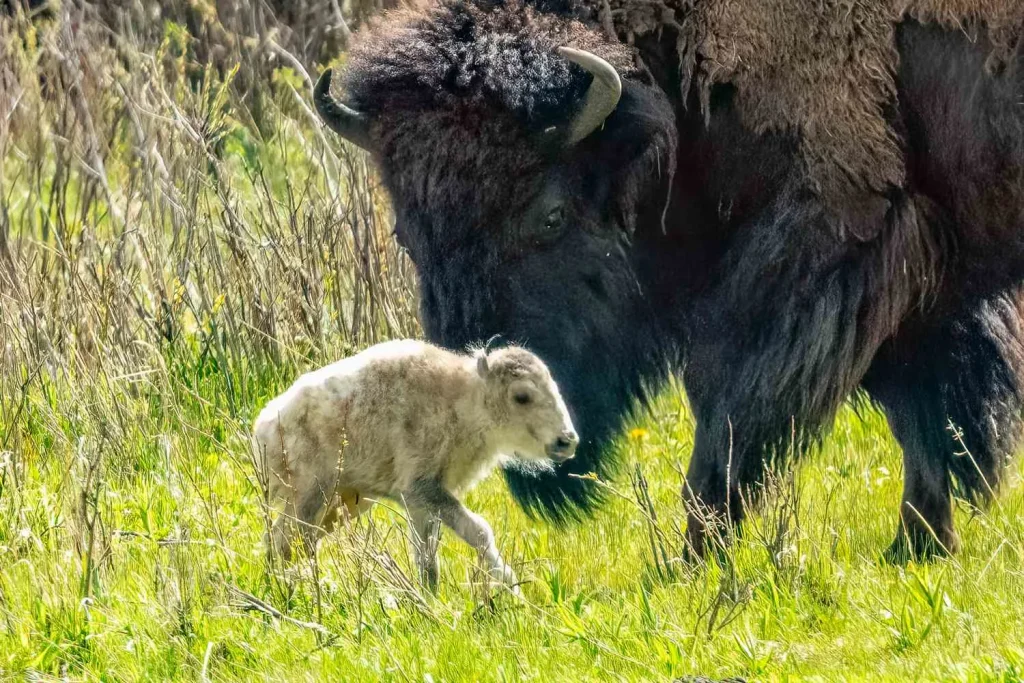
How cool is that?
But here’s another awesome fact.
Did you know the white baby buffalo, an American buffalo, is super important in Native American cultures?
Several Native American tribes, including the Sioux, Cherokee, Navajo, Lakota, and Dakota, consider white buffalo calves sacred.
These cultures see them as both a blessing and a warning. Many Native American tribes consider the young animal sacred and sometimes call it a “spirit bison” or “ghost bison.”
What does this birth mean?
According to Looking Horse, the spiritual leader of the Lakota, Dakota, and Nakota Oyate in South Dakota and the 19th keeper of the sacred White Buffalo Calf Woman Pipe and Bundle, the birth of a white buffalo calf signifies that “we need to do more.”
Jason Baldes, from the Eastern Shoshone tribe, also shared stories about the significance of white buffalo calves being born during times of significant change.
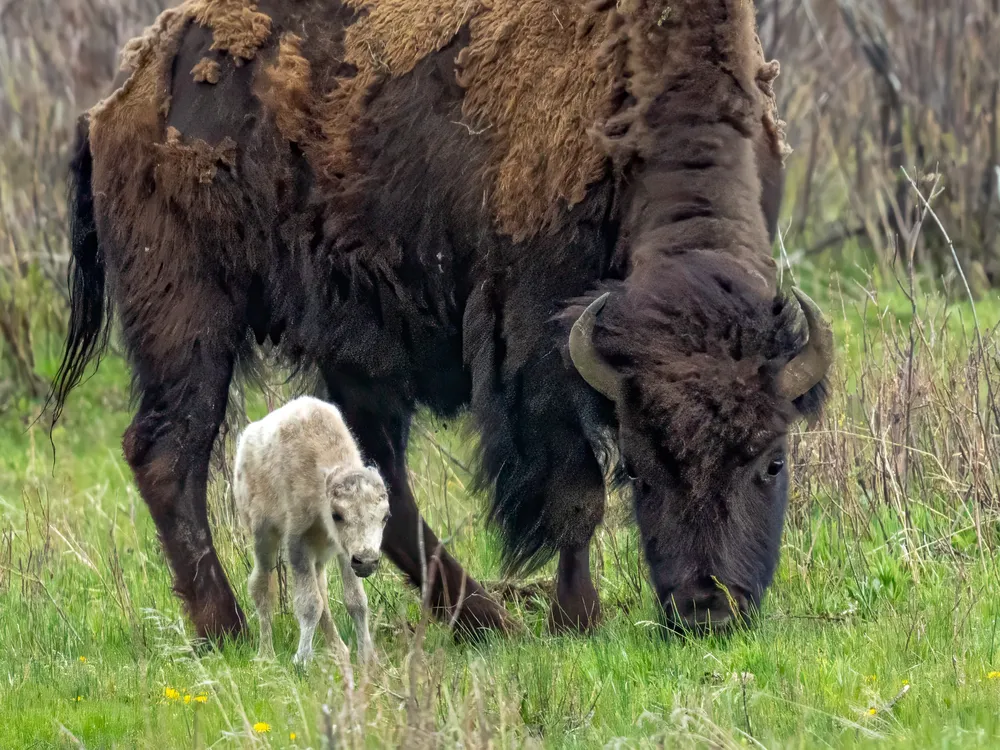
“We have tales of the Eastern Shoshone people hunting and chasing white bison or white buffalo from well over a century ago,” says Jason Baldes.
The legend of the White Buffalo Calf Woman has existed for more than 2,000 years, during which time nothing was good, food was running out, and bison were disappearing.
A figure known as the White Buffalo Calf Woman or Ptecincala Ska Wakan Winan appeared to two travelers. She brought a sacred bundle of sagebrush and the White Buffalo Calf Pipe (a pipe engraved with a buffalo). She also told them the pipe could be used to bring buffalo to the area that they could use for food.

The White Buffalo Calf Woman taught the Lakota people to pray about the seven sacred ceremonies. She also left a powerful prophecy about a white buffalo calf being born as a sign of her return during times of struggle. Then, as she left, she turned into a white buffalo calf.
Looking Horse, the 19th keeper of the Sacred White Buffalo Calf Pipe and Bundle believes that the recent birth of a white bison in Yellowstone is a sign to protect the land and the bison population in the area.
As an opposer of the Dakota Access Pipeline, he sees the birth of the young calf as a sign to protect the land and the bison population in the area. Dakota Access Pipeline is a controversial 1,172-mile-long underground pipeline in the United States.
How rare are white bison?
It’s uncommon to find a wild white buffalo, especially in Yellowstone, one of the few places where American bison can roam freely.
There used to be millions of these animals, but their numbers were drastically reduced due to commercial hunting. Yellowstone’s herd now has around 5,000 bison.
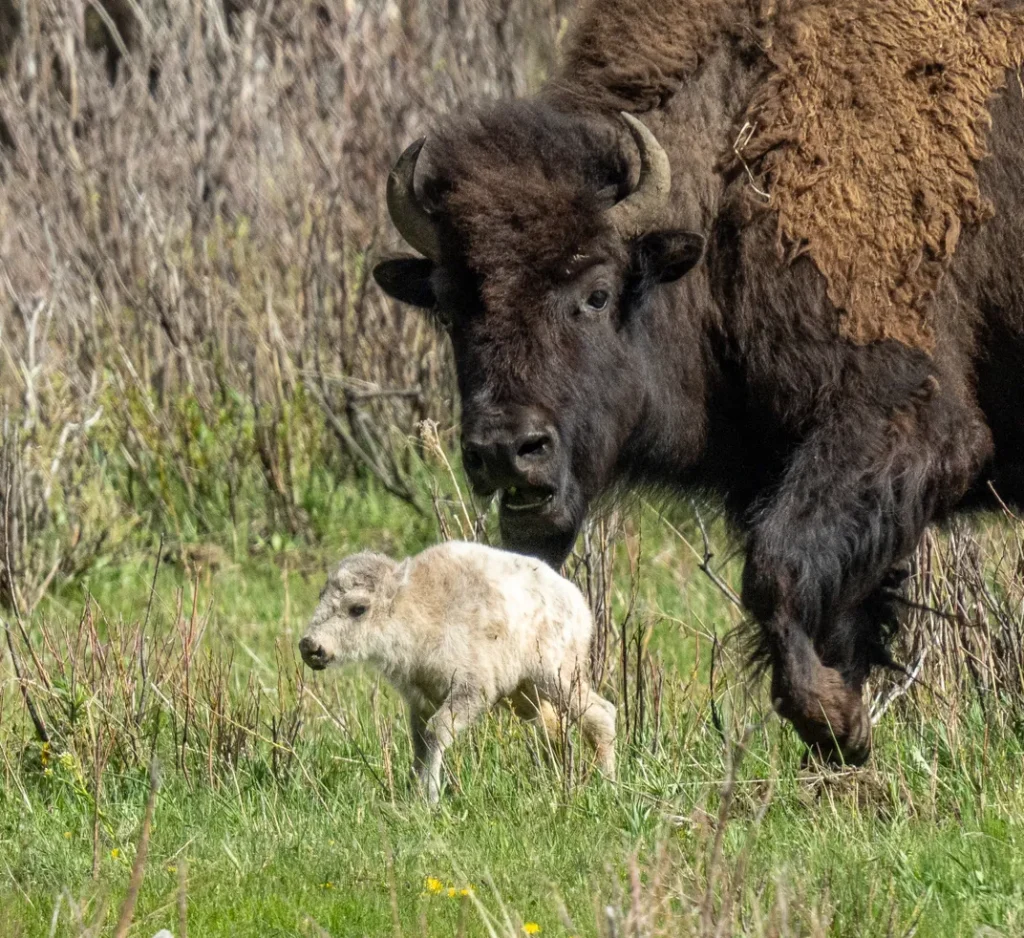
While some studies have been on albinism or leucism in animals like penguins, there’s little research on white buffalo.
White bison can result from albinism or leucism, genetic conditions affecting pigmentation. Albinistic bison would have pink eyes, hooves, and noses, while leucistic animals lack pigment in some but not all of their tissues.
Experts are unsure if the white calf in Yellowstone is an albino because it has a black nose and eyes.
According to the National Park Service, a white buffalo calf named Miracle was born on a farm in Janesville, Wisconsin, in 1994.
She is said to be the first white buffalo calf born since 1933. Another white calf was born in Avon, Minnesota, in 2012 but sadly died two weeks later.
Looking Horse confirmed that a naming ceremony for the Yellowstone calf had already taken place but did not share the name.
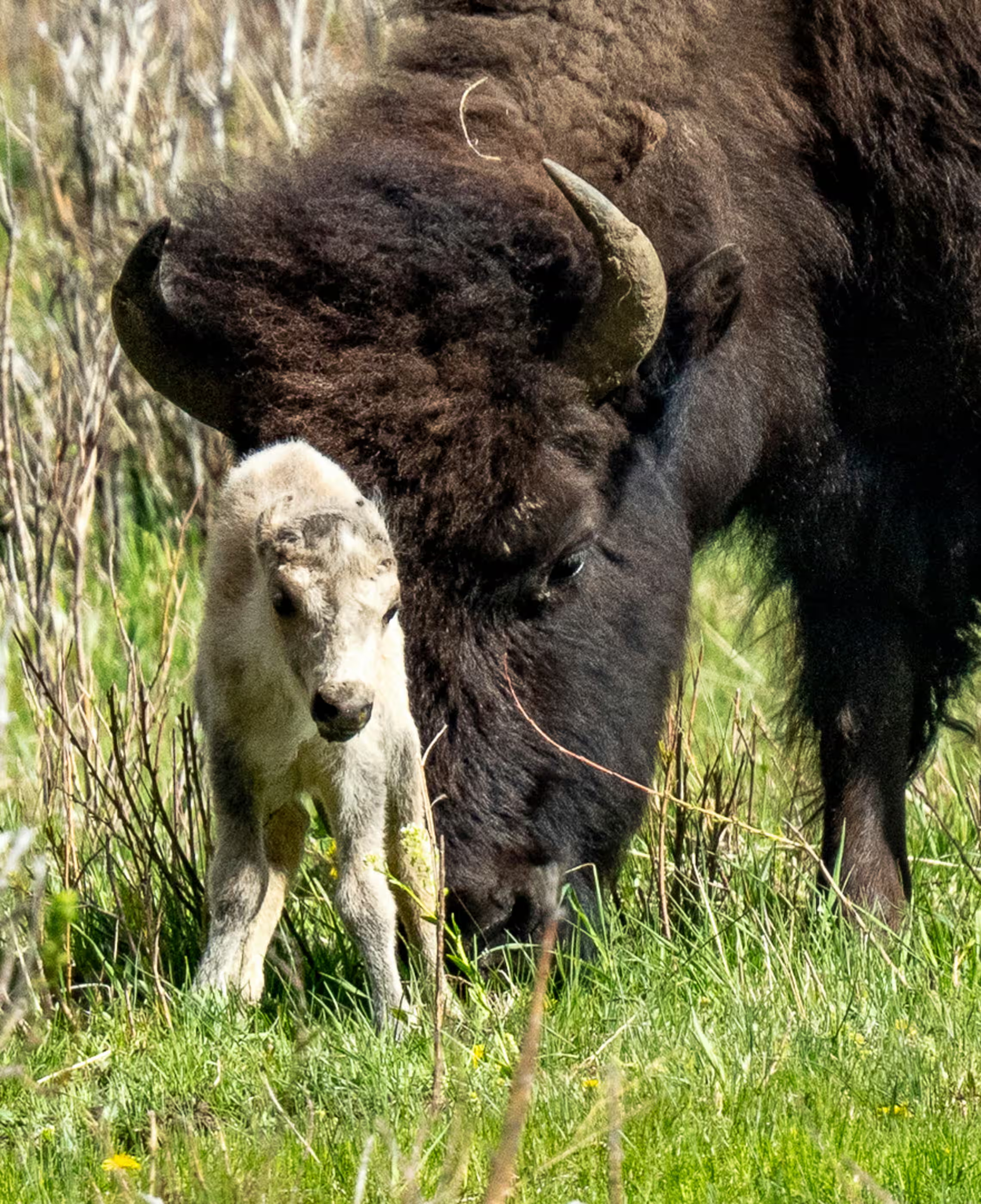
A ceremony celebrating the calf’s birth is set for June 26 at the Buffalo Field Campaign headquarters in West Yellowstone.
Baldes mentioned that the growing efforts in bison restoration and conservation will raise awareness about the importance of the white buffalo calf and the buffalo’s existence as wildlife.
He believes that bringing back bison to the natural landscape is crucial not only for their historical and cultural value to Native American tribes.
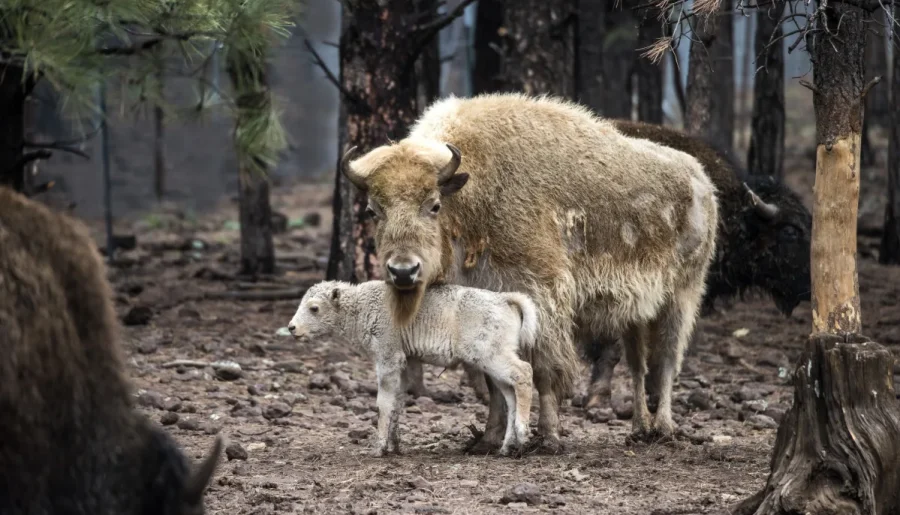





 , Write a Riddle
, Write a Riddle Love a Riddle
Love a Riddle !
!
